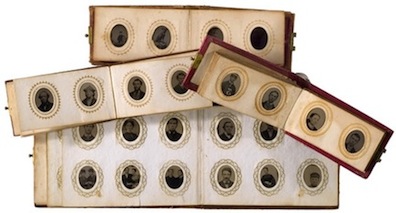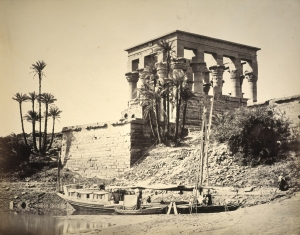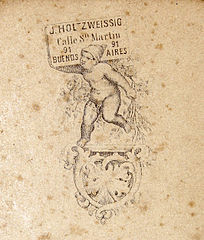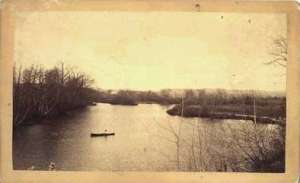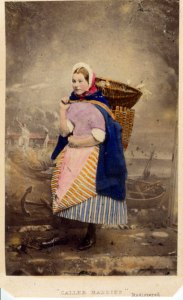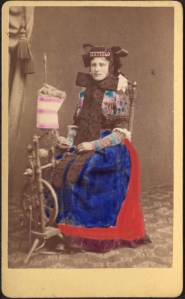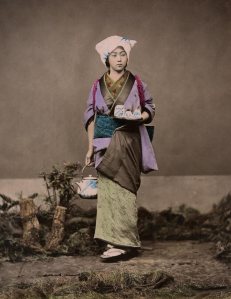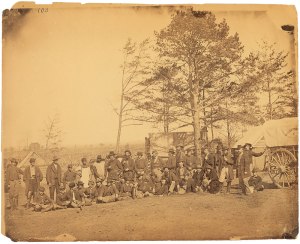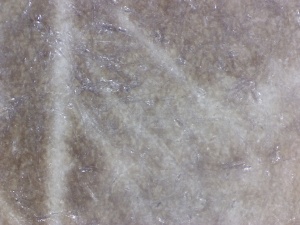This thread is on chapter 6 and 7 in the textbook (free pdf version here or purchase hard copy here). Albumen photography is a major area of antique photos, so if you can identify an albumen photograph you are in good shape.Practice and learn how to look for paper fibers in the image. If you can see paper fibers in an 1800s photo you can be confident it is authentic.The same process uses to make the cheap albumen CDVs at an antique store or in your family collection was used to make the Peck & Snynder trade cards, Four Base Hits and Mathew Brady originals.
When authenticating an 1800s photos, the paper should be thin, almost always mounted (pasted to a backing), there should be paper fibers in the image area under magnification, and no dot pattern in the image showing its a digital reprint.
If you have troubles doing the ‘paper fiber’ test, that the paper is thin is good. Quite simple, photo paper got thicker over time.
Some forgers paste a reprint image (usually a digital print) to the front of a real mount. The dot pattern and black light test will usually identify these quickly.
1800s and early 1900s photos are bone dry. They dry out with age.
Some collectors and dealers do the ‘sniff test’ to test if they smell musty and old. This is a fair edge.
The surface of albumen prints will often show some wear, such as spots of missing gloss to the surface. Check by viewing the photo at a sharp angle to light. Photos with completely unblemished surfaces are usually new.
The below is a pink albumen, which you will find from time to time:
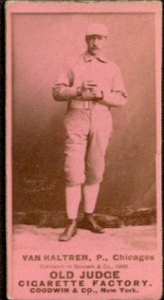
Below is the standard sepa tone of an albumen print
Below shows foxing on the back of a photo. Foxing is always a sign of old age
The below shows the standard sepia tone and foxing.
Albumen photos were sometimes hand tinted or colored. It was done in watercolor-like paint and usually not as ornage and detailed as here. The colors can be subtly and brash.
Below is a scarce ‘skinned’ albumen print. Someone removed it from the backing.
Below shows a microscopic shot showing the paper fibers on an albumen image
* * * *
Homework Questions for Assignment #2
7) Why do photo experts look for the visual presence of paper fiber under magnification in an albumen print?
8) Most albumen prints are mounted. What does that mean?
9)Antique albumen paper is very thick: True or False.
* * * *
Course Assignments:
